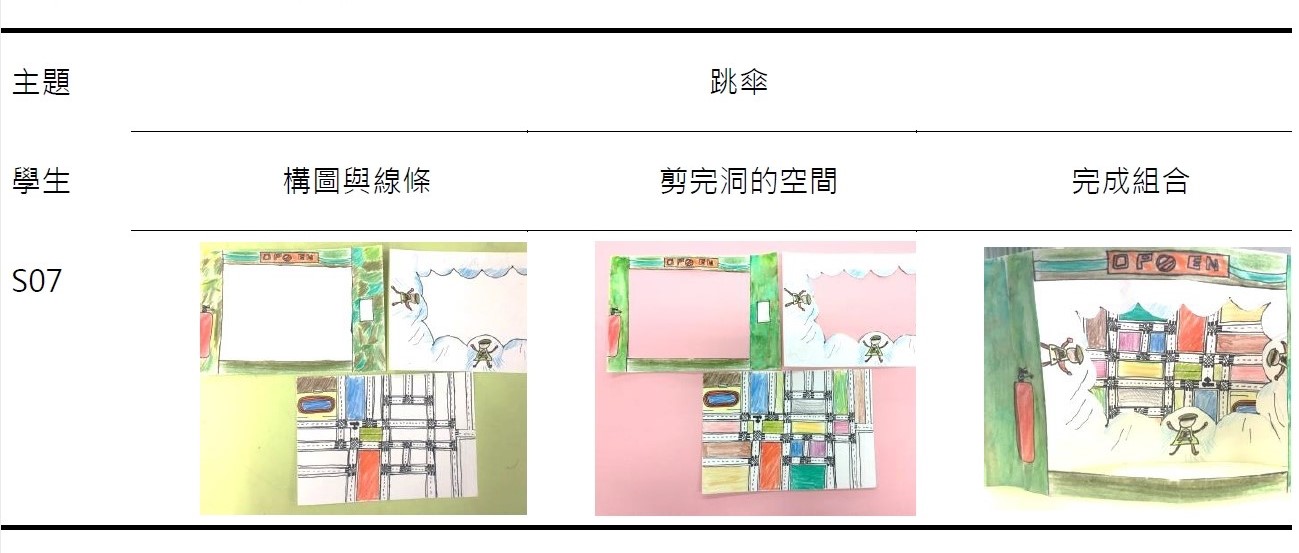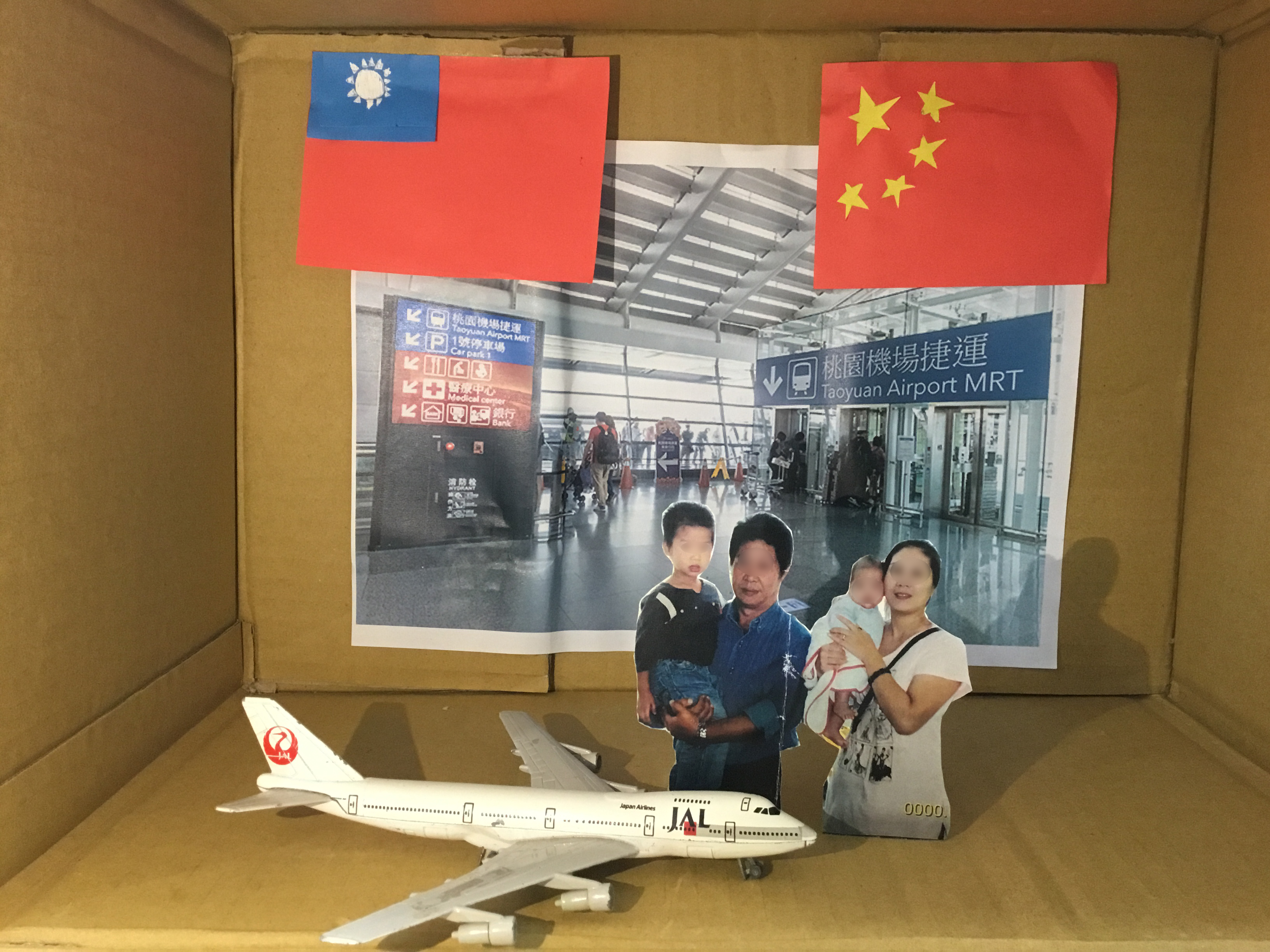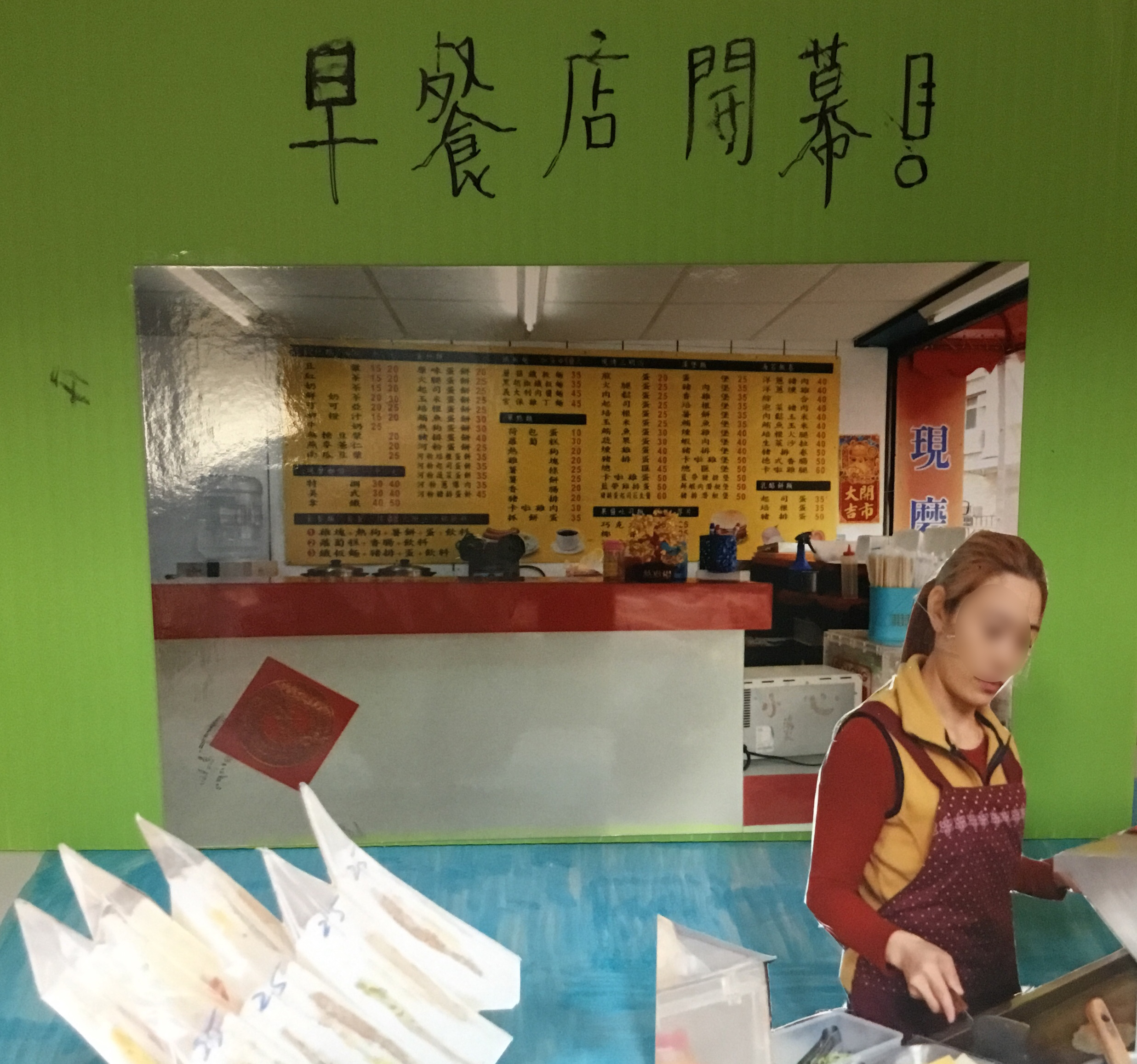A preliminary study on cross-field innovation achievements in visual art education
Project co-host Professor Chen Chundi, Department of Art and Design, National Taipei University of Education
Preface
The development of visual art education has evolved from subject-based art education in the 1980s to an educational thinking centered on art and labor education and creation as the main focus. At the end of the last century, it began to introduce multiple issues into art education, including environmental education, Aesthetic ability has expanded the art and labor structure, which was originally based on creative ability, and moved towards a richer art education (Lin Manli. 1994). The Ministry of Education designated the 103rd year of the Republic of China as the "Year of Aesthetic Education" to promote the "First Five-Year Plan for Aesthetic Education" and expand the research, development and practice of experimental courses in aesthetic education. The promotion of aesthetic education is a process of reversal of culture and art, allowing students to promote the learning of subject knowledge through the process of aesthetic experience. Teachers also benefit from the learning style of aesthetic activities, making them more comfortable and enthusiastic in implementation. in educational work.
In fact, cross-domain aesthetic courses make learning materials no longer limited to textbooks, but focus more on students' needs, establishing students' learning context, learner-centered teaching planning and implementation strategies, and taking life and culture as aesthetic education The main purpose is to learn situational connotations so that knowledge, abilities and attitudes can be integrated across domains. The most impressive thing about the 108 curriculum is its emphasis on the cultivation of literacy and life practice. Therefore, the curriculum planning and implementation of the visual arts discipline in elementary schools has also moved forward from the past focus on technique development to a direction in which observation, reflection, experience, sharing, and discussion are the main subjects of curriculum activities.
This article will introduce three cases of cross-domain visual art teaching results: new things in tunnel books, the mother image of new residents’ children, and the integrated development of maker learning, from which we can get a glimpse of the innovation and implementation of cross-domain aesthetic education. feature.
What’s new in the tunnel book
This course lasts for eight weeks, with the diverse changes of pop-up books as the main focus of performance. It is implemented for sixth grade students of elementary schools. The teaching purpose is to inspire students to observe the spatial range and levels of the space they are in through the production of pop-up books. , and transform discontinuous planes to learn painting combinations. Basically, this course uses the concept of tunnel books and combines spatial relationships to trigger children's innovative thinking, think about possible creative themes, and express the spatial relationships and depth they experience. It is expected to improve students' creative abilities and break away from two-dimensional thinking. limitations, able to integrate life experience and visual cultural stimulation into artistic creation. In addition, through grouping, in addition to training students' cooperative abilities, students also learn to appreciate, listen, dialogue and cooperate, laying a deeper foundation for the cognitive, emotional and technical abilities contained in visual arts.
The overall curriculum implementation focuses on the following two points:
1. From plane to three-dimensional: Using a combination of plane paintings, the foreground, middle ground and distant view in the space are presented in the tunnel book from the perspective of the viewer, expressing a layered sense of space.
2. From individuals to groups: Through group discussions and sharing, students learn the ability and understanding of interpersonal relationships, cooperation and sharing, learn tolerance and appreciation, and understand different opinions.
The body's creative ideation process consists of six stages, namely: 1. Adaptation of the original story; 2. Association of new stories; 3. Creative styling; 4. Picture imagination; 5. Personification techniques; 6. Experience fragments. Therefore, the course expects students to do more than just see, layer, and express, but to reflect on the development of the story in the situation they see, and think about the composition of space and ideas through situations like walking into a tunnel. To express the project, and then create a tunnel book. Therefore, the core point of its development process is reflection and transformation, hoping to improve students' thinking and integrated analysis abilities.
Taking the skydiving tunnel book developed by one of the students as an example, when the general public draws or sketches, the perspective is usually not from top to bottom, or from bottom to top, but in a vertical direction. However, this course hopes that students can develop at least three plane levels when making tunnel books, think about the correlation between each layer, and obtain more viewing angles to execute creation. The spatial configuration of the concept of skydiving is developed from top to bottom, as shown in Table 1. The perspective is also from top to bottom. The first floor is the cabin space, which has a mechanical and cold feeling; the second floor is the skydiver among the clouds. Travel and enjoy the moment of floating in the air; the third layer is used to pass through the clouds. When it is about to land on the ground, you can see the appearance of the landscape. It uses rich color blocks to present the urban scene overlooking the grid from a distance, which is quite design. feel.
In terms of development, students draw inspiration from the experience of flying, and then think about how to transform the process of looking down from an airplane into a process similar to skydiving. First make a sketch and develop three layers: inside the cabin, inside the clouds, and about to land. Then make holes and make more detailed drawings. Finally, after completing the drawings, add spacing and paste, and the tunnel book is completed.
Figure 1 is another tunnel book work with the theme of the haunted house world, but it breaks through the idea of three-layer space. The creation comes from students' personal experience of visiting haunted houses and part of their own imagination of the scene. For example, in the picture you can see pictures of various ghosts, such as Chinese zombies, Western ghosts, vampires, mummies, or with ghosts or Horror-related objects, such as bats, spiders, wild wolves, etc. After completing their preliminary imagination, the students believed that the required levels were greater than three levels, so they decided to develop a five-level tunnel book. In fact, the tunnel book is not only three-layered, it can be created with five layers, seven layers, or more layers, etc. However, due to time constraints, this student can only make a five-layer tunnel book. The work "Haunted House World" breaks away from the limitations of reality and incorporates the imagination of various ghosts and horrors. More importantly, students reflect on the experience of visiting haunted houses and create a tunnel book with the theme of horror adventure, which is full of travel experiences. Storytelling.
her in mind
"Her in My Mind" explores the image of mother in the minds of new middle school students in the Republic of China. A total of 8 weeks of teaching courses. The purpose of the course is to guide students to understand their mothers’ thoughts, attitudes and life through teachers and students discussing their own family life records, and then describe the image of mothers in their minds, and conduct interviews with mothers as the target. , through photography techniques, photographing visual art works that convey the image of mothers like documentary photography. The teaching focus includes guiding students to focus on the experience of parent-child interaction at home, and leading students to understand documentary photography, including its rich connotations, thinking about the issues or phenomena to be conveyed, common themes and themes, ethical issues, etc. Teachers share their own experiences so that students can have an immersive experience and promote interest in and recognition of this form of expression. In terms of the expression of image transmission, through image collage, graffiti, drawing, etc., a three-dimensional space, like a stage, is constructed, and narrative explanations are used to interpret the image of the mother when sharing.
At the center of this work is the student's family, including his parents, him, and his half-year-old younger brother. The parents look loving, and the whole family has a very close relationship. The background of the picture is a picture of the airport hall, with the national flags of Taiwan and China at the top. An airplane model is placed in the foreground, and these materials are placed in cardboard boxes to create an effect similar to a picture frame.
This work, as the student said, is a very private matter in the family. The student's mother is Chinese, but his eldest sister, the student's aunt, did not give birth to a baby boy because her husband's family values boys over girls. Therefore, we hope that the student’s parents can adopt his younger brother, the baby in the picture, to their family. Although the student's parents were very reluctant, after the aunt's constant lobbying through her grandmother, the parents reluctantly agreed. So after that, they went to China to visit their brother every year. Except for his younger brother, everyone in the family knew about the whole thing, but they knew it tacitly.
Although the student was of limited age, he still knew that this was a very special matter, affecting two families on both sides of the Taiwan Strait and involving the entanglement of three generations. Therefore, the students tried to present the scene of their family flying to China every year to see their younger brother. The national flag, airplane and airport all have their own symbolic meanings. The two national flags in Figure 2 are cut and pasted from colored paper. The Taiwan flag represents the student’s father and the people who live in the country. For Taiwanese student families, the Chinese flag represents the mother from China and the mother’s natal family. The pasting position matches the nationality of the parents to represent the different growth backgrounds of the parents. The background is an image of an airport waiting room, which represents a turning point in the process. Once you leave this space, you are in another country. The plane refers to the distance of the road and the directionality to China. In fact, in the foreground is one of the few family photos of the student's family that includes a younger brother. The overall arrangement expresses the annual flight from Taiwan to China to visit and reunite with my younger brother. The photo of the mother holding her younger brother further highlights the image of the mother's helplessness, reluctance, and love.
Furthermore, Figure 3 shows the scene of the mother working in the breakfast shop opened by the mother, expressing the mother's concentration and hard work. The background image includes the store's order sign, menu content, bar furnishings, tableware, etc. The mother was wearing an apron and was in charge of the frying pan. She looked very attentive and skillful in her movements. The student imitated the decoration on the counter in the store and pasted a picture of a sandwich in the foreground of the work, and wrote "Breakfast shop is opening!" above the picture with a strange pen. Big letters. What's even more special is that although the mother is the protagonist, she is placed in the lower right corner of the picture and does not look towards the viewer. There are two perspectives in the picture, one is a close shot in front of the mother, and the other is a medium shot looking at the store. Students skillfully use collage to co-locate images from different perspectives.
This store was opened by a student when he was in the sixth grade of elementary school. Two weeks after the store was opened, the student was asked by his mother to help. This way the student knew where the breakfast store was and has been helping until now. Before that, the student's mother was a housewife and would apply for jobs in other stores to help the family earn some money. What students want to present is a mother who is serious, focused on her work, enjoys her work, and loves her job. Through this work, the students showed their thoughts on family economic issues, and pointed out that the financial burden on their families is somewhat heavy, and the raising of general living expenses is already stressful. If there is even a little extra expenditure, the students themselves will also be worried. Therefore, the breakfast shop opened by my mother has become one of the important sources of income. Through the collage arrangement of sandwiches, frying stations, ordering signs and other patterns in the picture, I attempt to "reproduce" my mother's serious work and hard work on a stage like the picture. The image of concentration also expresses respect for the hard work of the mother.
Integrating Maker’s Visual Arts Curriculum
At present, maker education is highly valued by primary school teachers. Through maker education, students are expected to have the ability to do things, organize learning, arrange planning, and more importantly, enable students to make objects of their imagination. This course uses visual arts learning to inspire primary school students' interest in maker activities. Through observation, description, practice, and activities integrated into life, this course runs through the entire learning process. The learning content is divided into two units: laser engraving of wooden plates and aesthetic design of snack plate placement. The former allows students to use a laser cutter to carefully draw and then burn the campus plants observed in the nature class on a wooden plate. In the latter, the teacher first guides the students to understand the principles of aesthetic form, and then the students will choose their favorite snacks and put them on the plate through group discussion.
At the beginning of the course, students are first introduced to the connection between the campus natural environment and artistic creation, and develop their ability to carefully observe the details of the outline of plants and the delicate veins of leaves and other textures. The second is laser cutting machine teaching, focusing on how to pass plant textures through the laser cutting machine to show the 2.5D effect. Finally, the wooden plate carved by the laser cutting machine is used as the serving plate, as shown in Figure 4.
Figure 5 shows the plating work with the theme of Taiwanese wild lilies and butterflies. Among them, the round paper of Jinsha chocolate is the head of the butterfly, the squid silk is made up of the body, the peacock biscuits folded in half represent the wings, and the round chocolate biscuits represent the tentacles. It shows that this student uses symmetry in formal beauty when arranging dishes, and personifies snacks to use his modeling imagination.
Students said that the inspiration came from their observation that the school is located where Taiwan's lilies are being restored, and lilies can be seen everywhere inside and outside the school. When the students were observing the Taiwanese lilies in the atrium, they saw several beautiful butterflies flying next to the Taiwanese lilies, so they decided to use lilies and butterflies as the theme and placed a butterfly on the Taiwanese lilies, as if it were resting on the lilies. Sucks nectar from flowers.
The theme of the plating in Figure 6 is the birds living in the bird's nest fern. The right side of the picture is the bird's nest fern burned by Rachel, and the left side is the bird decorated with snacks. Its aesthetic form and composition are as follows: Sands chocolate is used as the bird's body, airplane biscuits are used as its wings, the number three biscuits are the bird's feet, and the bird's round head can be represented by zero dollar biscuits, as well as the use of pink Round candies represent eyes, and squid threads are tied into loops to create branches on which the birds can sleep. The structure of this work is to place the bird's nest, which symbolizes snacks, to the left of the burned pattern of the bird's nest fern, but the two overlap by about one-third, conveying the image of birds living in the bird's nest fern.
The student council was inspired by the bird's nest fern outside the principal's office, which he mistook for a plant that could make birds a home. However, deep down in his heart, he is a child from a single-parent family and longs for a complete family, so he projects this expectation into the design of such works. This work not only shows students' observations of plants in nature, but also shows students' imagination and process of incorporating word associations into their creative ideas and responding to their own life characteristics.
in conclusion
The nine core competencies developed in the 12-year national education curriculum based on independent action, communication and interaction, and social participation serve as the main axis of coherent teaching and learning in primary and secondary schools. In practice, these three aspects focus on the integration of students' learning and life, through the activities of perception, creation, and appreciation, understanding beauty from life, and reflection and sharing (Ministry of Education, 2014). As a place for the transfer of experience, knowledge and skills, schools have also moved away from the past technical teaching approach in disseminating cross-field visual aesthetic education to a more contextual and relational level that is closer to life and culture (Hong Yongshan) , Huang Qihui, 2021). The three teaching cases presented in this article present the following three characteristics: starting from life and responding to life; starting from observation and ending with sharing; expressing oneself and practicing in social situations.
In the cases presented above, the students' creativity comes from the things around them in life and their experiences, as well as the projection of their own experiences. The origin of creation comes from observing oneself, the surroundings, experiencing one's own thoughts, and understanding the context and relative value of the environment through sharing and discussion. Teachers often adopt a meaning-seeking approach in assessment (Lin Xiaoyu, 2016), which encourages students to synthesize what they feel, learn, and know into symbols with personal meaning and value.
As Zhao Huiling said (2016), the spirit of cross-field aesthetic education is to emphasize the integration of art learning with culture, life, and different disciplines. How to effectively close the distance between art disciplines and other disciplines, enable effective curriculum planning, joint preparation, and rigorous execution, and develop more contemporary innovative courses and implementation methods, really depends on the efforts and efforts of teachers in each discipline. cooperate. It is expected that cross-field aesthetic education will not only be cross-field in the art field, but also all disciplines can jointly carry out innovation and research in curriculum and teaching through artistic thinking (artfulness), so as to enhance the quality of national education and the competitiveness of students.











